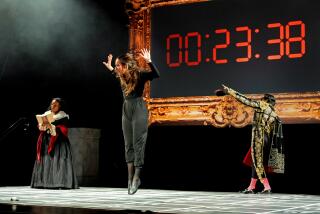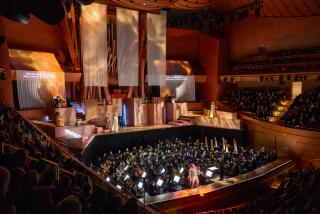Essential Arts: Plácido Domingo’s L.A. Opera exit leads to questions of legacy
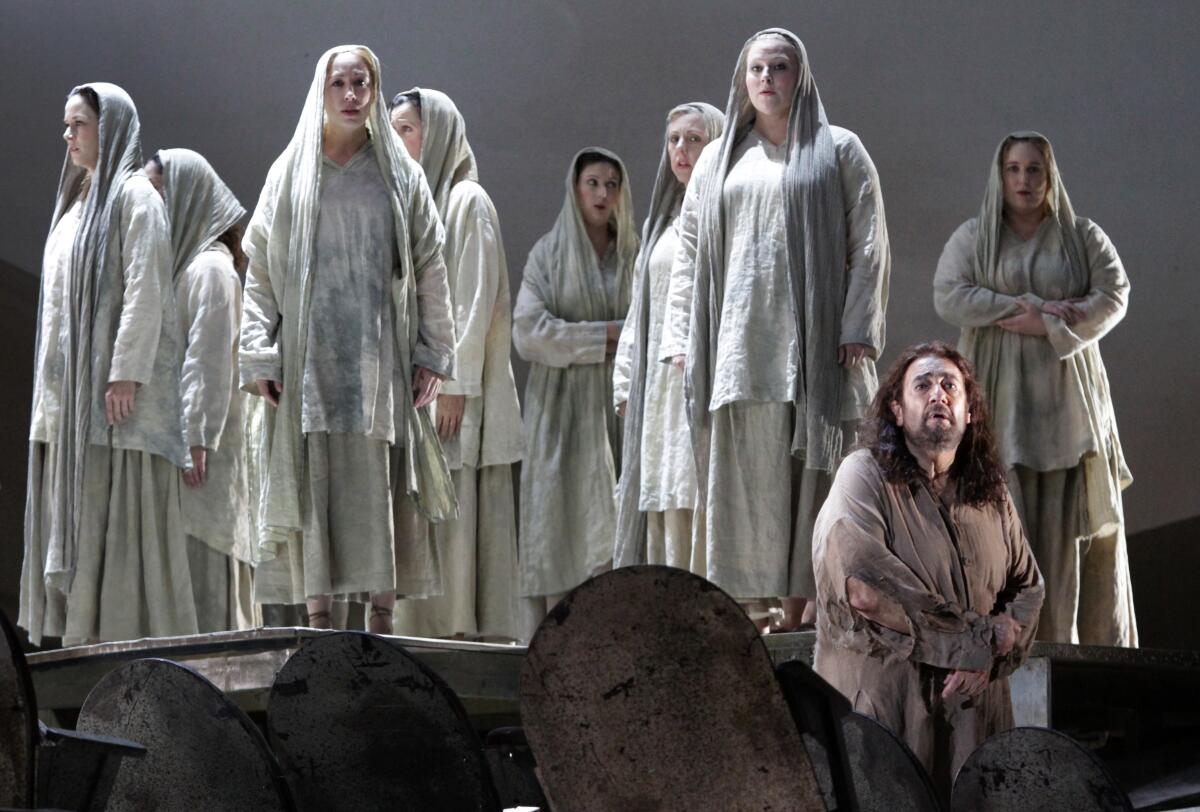
It’s the middle of the night in Chicago where I’m writing this newsletter — to a soundtrack of Jessye Norman videos harvested from YouTube. I’m Carolina A. Miranda, staff writer at the Los Angeles Times, with the week’s essential art news:
Domingo is out
Plácido Domingo, who for 33 years has been synonymous with L.A. Opera, has resigned from his post as general director after multiple allegations of sexual harassment. The Times’ Jessica Gelt has the full report.
“Recent accusations that have been made against me in the press have created an atmosphere in which my ability to serve this company that I so love has been compromised,” Domingo wrote in a statement to The Times. “While I will continue to work to clear my name, I have decided that it is in the best interests of L.A. Opera for me to resign.”
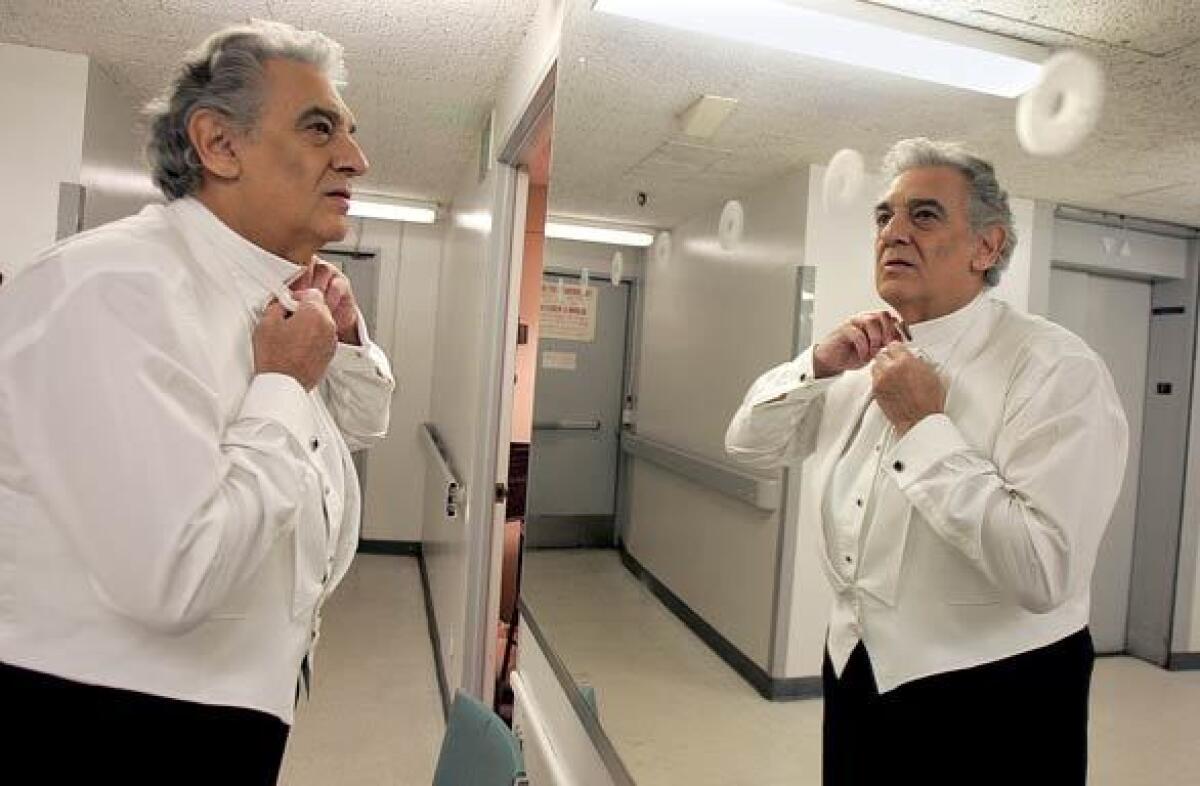
Times classical music critic Mark Swed examines Domingo’s legacy: “The announcement has left his fans, his company, this city all reconciling the troubled present with a revered past deserving of celebration.”
Looking at the Domingo situation, as well as the firing last year of the Metropolitan Opera‘s music director James Levine after sexual misconduct accusations and criticism of soprano Anna Netrebko‘s use of skin-darkening makeup to play the role of Ethiopian princess Aida in Verdi‘s opera, critic and radio personality Olivia Giovetti wrote on the state of the form in the Washington Post: “To really save opera — and classical music in general — we have to let it die.”
Classical notes
Spirits were high when Jaime Martín made his first appearance as musical director at the Los Angeles Chamber Orchestra last weekend. Mark Swed writes that the show included “a riotously physical, bull-in-the-china-shop-exhilarating performance.”
On stage
Times theater critic Charles McNulty headed to San Diego for the premiere of the new musical “Almost Famous,” inspired by the Cameron Crowe movie of the same name. The show, he writes, is “as shimmering as a stadium of lighters during a Led Zeppelin encore” and “an unqualified winner.”
John Leguizamo has some advice for anyone feeling anxious about the political climate: “Just hang out with a Latin person,” he tells Jessica Gelt. “We’ve experienced this forever.” The performer talks with Gelt about “Latin History for Morons,” his one-man show, along with how he contends with the subject of Donald Trump.
“Gem of the Ocean,” the first installment of August Wilson‘s “Pittsburgh Cycle,” has landed at A Noise Within, and F. Kathleen Foley reports that it’s “a staging that is alternately leisurely, suspenseful, funny and poignant.”
Contributor Philip Brandes reports on “How the Light Gets In,” the “nuanced new play by the prolific E.M. Lewis, and Daryl H. Miller checks out Hamish Linklater‘s “The Vandal,” a work that is in turns “eerie,” “amusing” and “poignant.”
Margaret Gray reviews Jonathan Shapiro’s “Sisters in Law” at the Wallis, which focuses on the differing lives and views of Sandra Day O’Connor and Ruth Bader Ginsburg.
In the galleries
Times art critic Christopher Knight has been rooting around rail magnate Henry Huntington‘s papers — namely, the new exhibition, “Nineteen Nineteen,” that marks the centennial of the Huntington Library, Art Museum and Botanical Garden. The show “displays a wide-ranging cross section of items related to the title’s year, with around 275 chosen from the roughly 11 million in the Huntington’s collections.”
Unmentioned in the exhibition? The fact that Huntington intended his library to be free to the public. Instead, it’s now one of the most expensive museum tickets in L.A.
The Getty Museum has acquired works by Renaissance masters Agnolo Bronzino and Giovanni di Balduccio that are now among the “greatest works” in the collection. Jessica Gelt reports.
Last year, artist lauren woods produced an installation for the University Art Museum at Cal State Long Beach culled from government records of police killings of African Americans. Just before the show opened, the museum’s director, Kimberli Meyer, was fired. In response, woods silenced the work’s key component: a sound piece that played audio related to 25 deaths. “American Monument,” as the piece is titled can finally be heard at UC Irvine’s Beall Center for Art + Technology, reports Makeda Easter.

Contributor Scarlet Cheng reports on a show by Julie Green at the American Museum of Ceramic Art that records the last meals of death row inmates and the first meals of exonerated prisoners who have just been released.
Leah Ollman writes about a show of paintings by Patty Wickman at Lora Schlesinger Gallery that make of the everyday something epic: “She pays scrupulous attention to the edge and surface and gleam of every form, but still an ease and looseness invigorate the surface.”
Ollman also reviews new works by Laura Krifka at Luis De Jesus Los Angeles. The San Luis Obispo painter creates domestic scenes in stylized settings that are infused “with a sexual charge, tinged with unease.”
I profile artist Nayland Blake, whose retrospective at the Institute of Contemporary Art Los Angeles features “sculpture and assemblage that takes everyday objects — shoes, toys, record albums, bondage gear — and uses them to pick apart social categories such as gender, race, queer sexuality and the fraught points at which they can meet.” Plus, there is gingerbread. Lots of it.
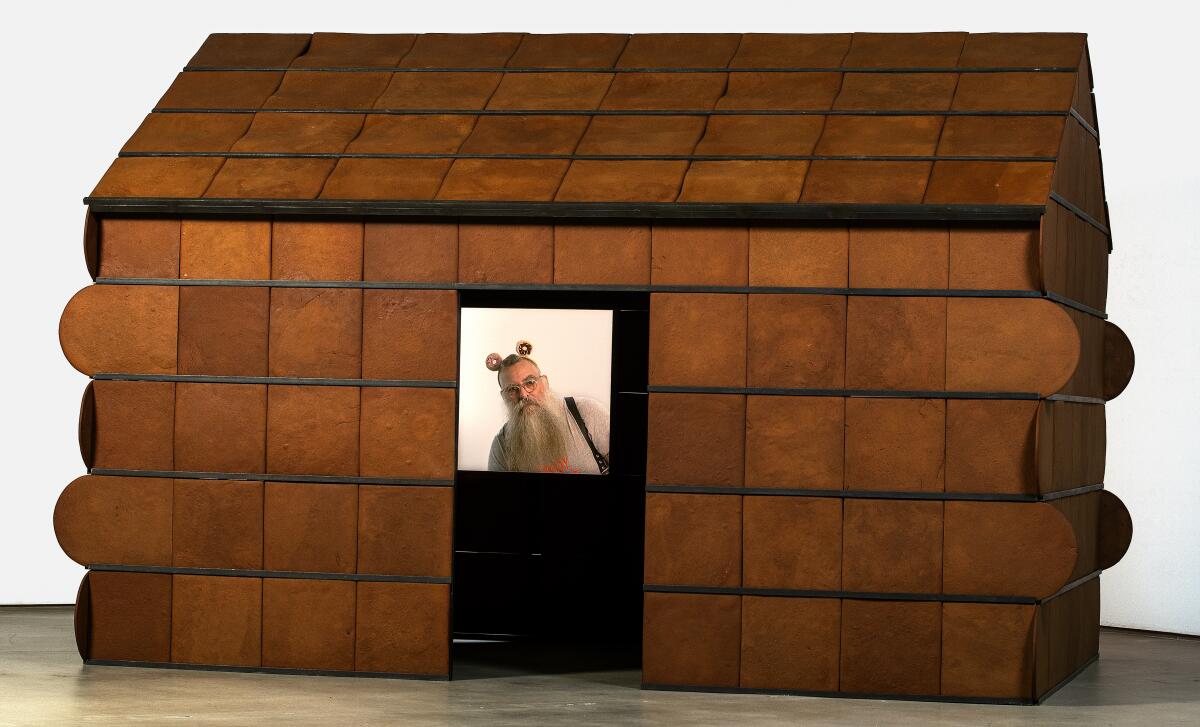
Sharon Mizota hits the Hollywood galleries for an impromptu art walk that took her to Various Small Fires, Steve Turner and Diane Rosenstein, among others.
At MOCA, a pair of new translucent red cubes by Larry Bell create a light show as the sun travels around them. “When the sun is going down and there’s just a sliver of light that comes from the sunset through two of the towers that are there, it’s magical,” Bell tells The Times’ Deborah Vankin.

At home with Tom
A house in Echo Park where the late Tom of Finland (born Touko Laaksonen) used to stay for long spells, has become a museum and a place of pilgrimage.
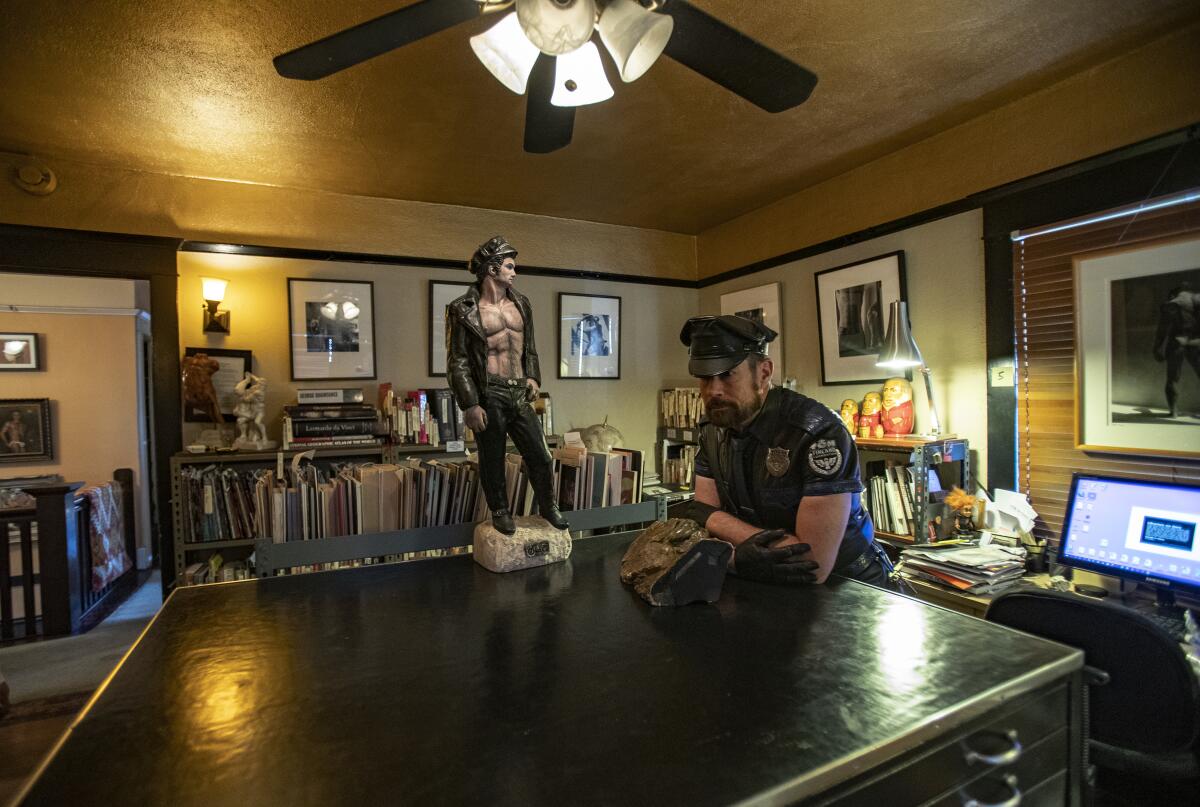
Passages
Jessye Norman, the renowned soprano and one of the rare black singers to attain international fame in the world of opera, has died at 74. “A keen interpreter as well as a magnificent singer, Ms. Norman had a distinctly opulent tone that sounded effortless, never pushed,” wrote Daniel J. Wakin and Michael Cooper in the New York Times.
Mark Swed pays his respects to Norman, who “had a voice that, in her prime, filled any room or arena with a glorious sound capable of taking over your psyche.”
And Alex Ross in the New Yorker describes a performer who “brought to bear an inborn authority.”
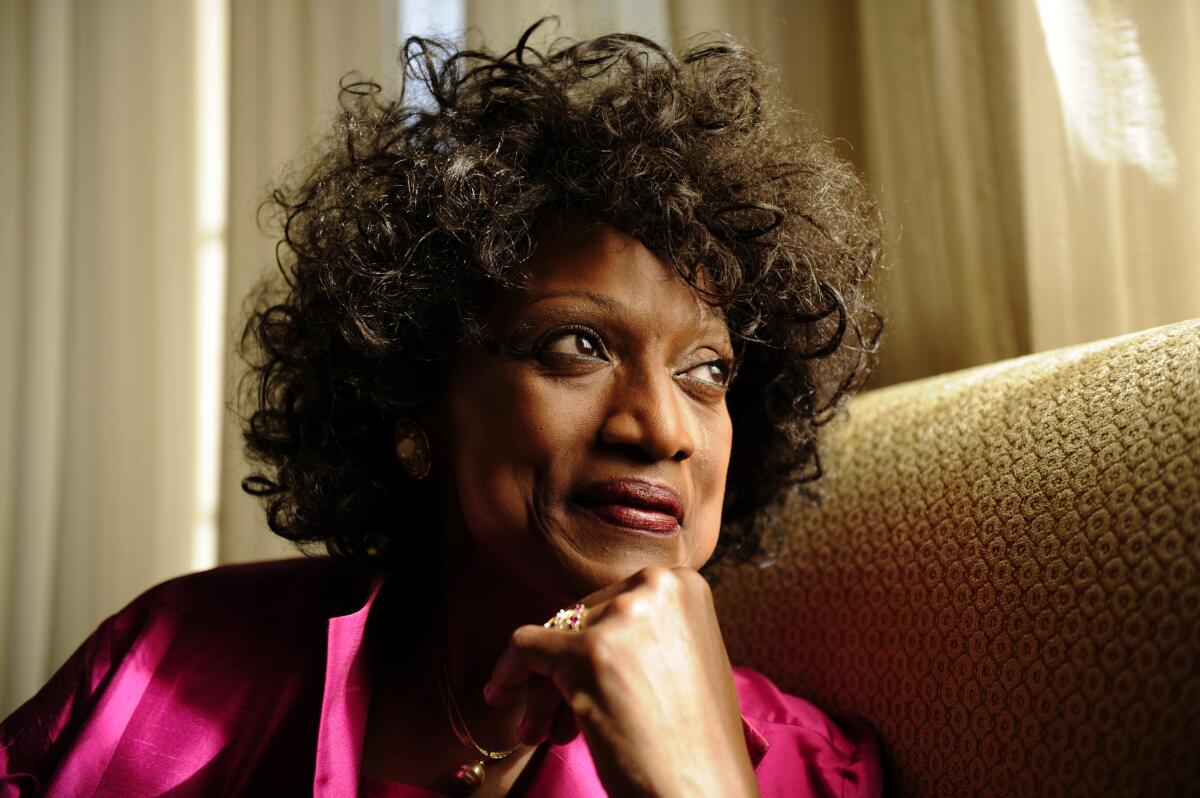
Martin Bernheimer, a former Times classical music critic who won the Pulitzer Prize in 1982 and was renowned for his tough, witty reviews, has died at 83. Swed pays tribute to a writer “who attacked philistinism without fear wherever he saw it.”
Deborah Marrow, former director of the Getty Foundation, has died at 70. Marrow oversaw the hugely influential arm of the Getty that dispensed grants for the Pacific Standard Time artistic juggernauts, among other initiatives. The Times’ Deborah Vankin has the obit.
Ready for the weekend
I’ve got all the latest art openings in my weekly Datebook, including a cross-border biennial at the Armory Center in Pasadena.
Margaret Gray rounds up all the best theater, including a series of short plays inspired by current events.
And Matt Cooper lists the nine best things to do in L.A., which include the L.A. Phil‘s season opener.
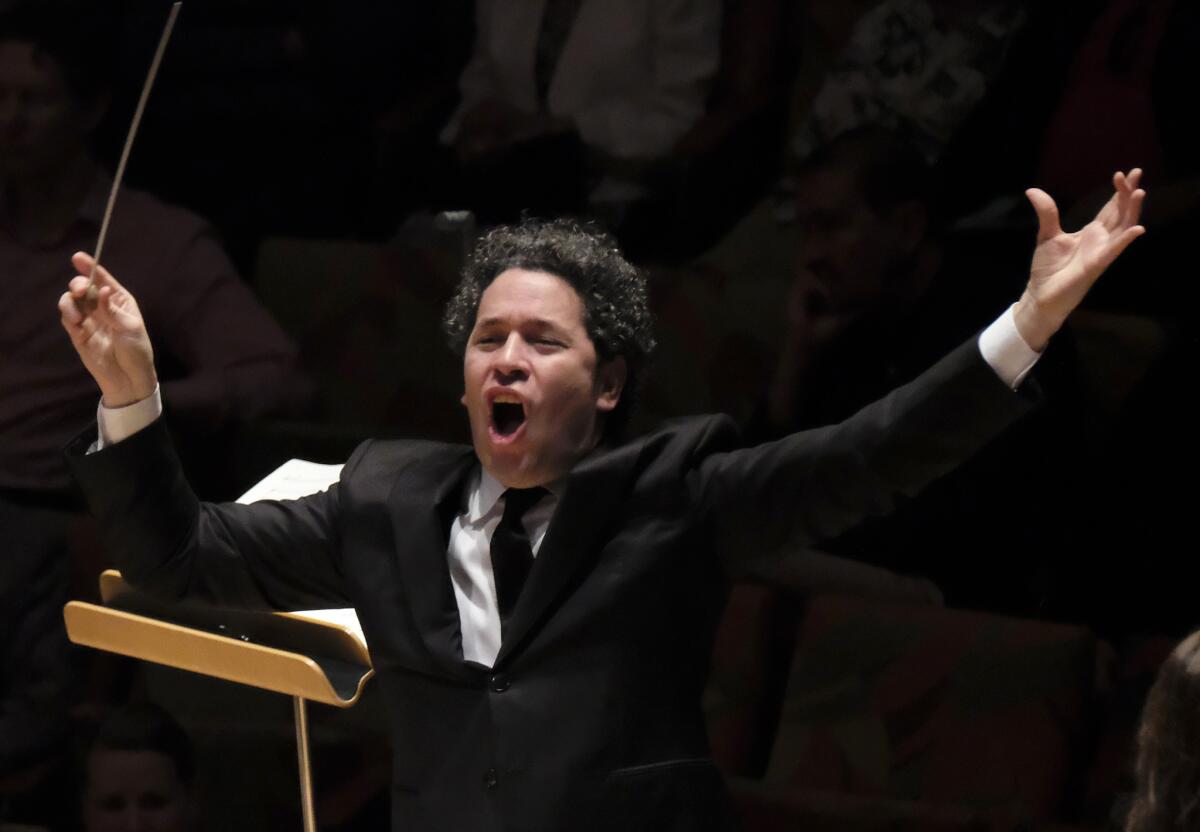
In other news
—Bill Kramer, who served as the Academy Museum of Motion Pictures’ director of development until 2016, is now back as the museum’s director, replacing Kerry Brougher after his sudden exit.
—The L.A. Phil, which had been contending with the abrupt resignation of Simon Woods, has named longtime insider Chad Smith its new chief executive.
—A new biography of Frank Lloyd Wright tries to humanize the architect, but critics Sarah Williams Goldhagen and Patrick Sisson have bones to pick with that idea.
—A history of pedestrian malls.
—Scrutinizing the sources of wealth that make U.S. museums run.
—Kara Walker has built a monument that questions monuments.
—MoMA is rearranging the furniture.
—A piece of a missing sculpture from the L.A. Public Library was found in Arizona. Where are the other two pieces?
—Dear France: So sorry. Sincerely, USA.
Last but not least ...
Jessye Norman singing “Liebestod” from Wagner’s “Tristan und Isolde.”
More to Read
The biggest entertainment stories
Get our big stories about Hollywood, film, television, music, arts, culture and more right in your inbox as soon as they publish.
You may occasionally receive promotional content from the Los Angeles Times.
